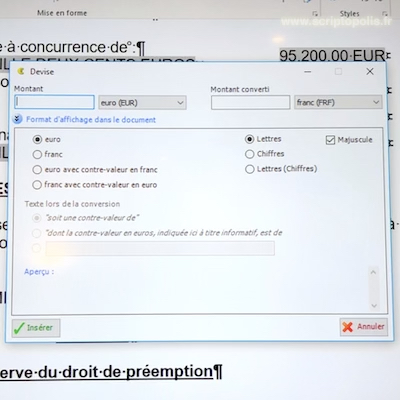Writing numbers
Roanne, february 2020.
Should numbers be written with numbers or letters? Mathematics aside — where numbers reign among a multitude of symbols — it doesn’t matter as long as they are readable. So what is the point of using this software, which differentiates between three different options? Another digital fantasy? It’s not that simple. In some administrative or banking writings, and even more, in authentic deeds, the inscription of numbers is crucial. Years, dates, and financial sums are particularly concerned. Besides the document’s location in a well-identified space and time, the date specifies its position within a chain of production, successive or parallel, of other texts, both upstream and downstream. Here not only does the date set the time, it also marks a point in time from which a specific delay starts to run before the next act is performed. These elements are so important that in the printed world, certain numbers are part of the mandatory handwritten mentions within the textual material. Contributing to the aesthetics of legal acts, reinforced by the peculiar association of lower and upper case letters, the writing of numbers is an essential attribute for another reason as well. Even in an all-electronic world, the dates or monetary amounts may render the document null and void. If they do not respect their expected graphic design, ruled in the smallest details, and the document’s power of expression is directly tainted. Although the statements make sense, the pragmatic force is reduced to nothing. Here, to write numbers in letters or numbers is to make the text an act that actually operates in the world.







